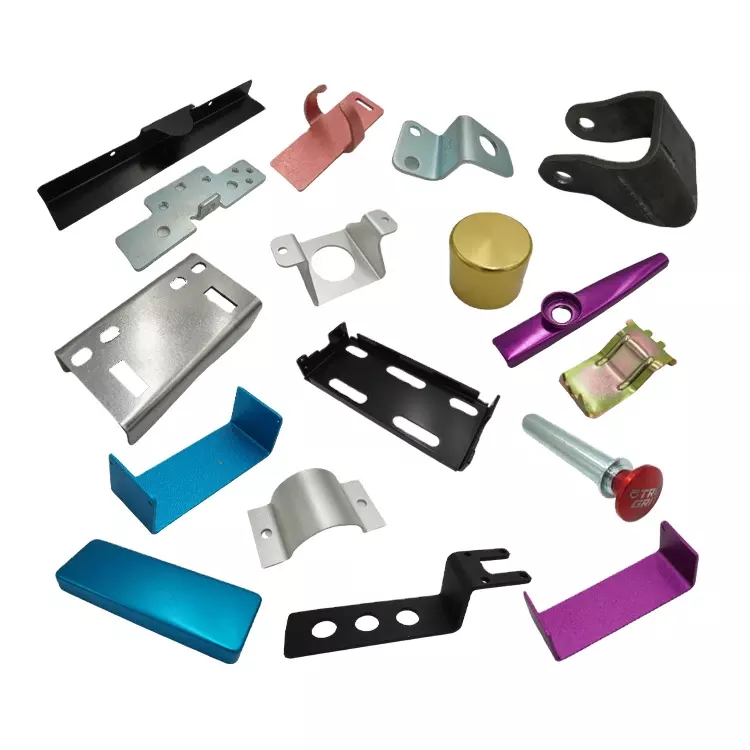Part 1: The Best material for sheet metal processing
In the process of sheet metal processing, there are many materials that can be used. Usually we choose the most suitable material according to the processing requirements of the product, and also choose different materials according to the characteristics of the workpiece. In addition, there are many types of sheet metal materials, and the processing procedures of many materials are also quite numerous. Therefore, when selecting materials for processing, it is necessary to see which materials have fewer processing procedures, simpler processing, and then choose from them. corresponding material. Next, I will tell you about the two most commonly used sheet metal processing materials.
1. Cold rolled sheet
In sheet metal processing, there are many applications of cold-rolled sheets, especially cold-rolled thin steel sheets, which are very common in processing, mainly because the quality of this material is relatively good, and the processed products are also Relatively easy to use. Moreover, it is easier to grasp the size in the process of fabricating. This material is generally annealed during processing, so its mechanical properties are also very superior, and it has been widely used in many fields of life.
2.Stainless steel plate
The application of stainless steel plate is more than that of cold-rolled plate. This material is used in our home, bathroom and other fields in our lives. This material is very convenient to use and generally does not require surface treatment. This material is widely used. The units with high hygiene requirements are used most, and it is very convenient to take care of them. More importantly, the products processed from this material are very smooth and the surface looks more beautiful.
To sum up, the materials we use in sheet metal processing are not only these, such as galvanized sheet, hot-rolled steel, etc. are also used. When we consider the processing of certain products, we must choose the processing materials to be used according to the different materials and workpieces, so that we can process the products we are satisfied with.
Part 2: The key processes of sheet metal processing are as follows:
1. Cutting process.
Usually, workers at the sheet metal processing site will cut the part material of the appropriate size from Osaka through the shearing machine according to the extended drawings provided by the technical department. In the case of a punch, the dead zone of the furniture should be considered. After the cutting is completed, the worker will mark the material number with a marker on the surface of each piece of material.
Note: There are also some sheet metal processing factories without this processing step, typesetting directly on the standard sheet, and then directly punching/cutting.
2.Stamping/cutting process
During this process, NC codes need to be compiled for the parts being machined. Most machine tool manufacturers now provide automatic programming software, which greatly facilitates programming engineers. When punching/cutting, the factors that programming engineers must consider are sheet utilization, tooling, efficiency, accuracy, etc. After punching/cutting is complete, the part is taken out of the micro-street and sent to the press for bending.
3.Bending
The bending process of sheet metal processing is very important. First of all, there must be accurate data design, and then the selection of bending tools, such as tools or tool grooves, is based on the thickness of the material, and the use of these tools is to avoid mutual collision, causing Unexpected phenomena occur in sheet metal processing. After the bending die is selected, the bending process can be carried out. For the bending process of the sheet metal shell, the order must be clear. Under normal circumstances, it is first inside and then outside, first small and then large, and then you can also From special to ordinary.
In the process of sheet metal bending, the degree of bending should also be considered. Under normal circumstances, the sheet metal shell is controlled between 30 and 40 degrees, and then in order to ensure the integrity of the sheet metal workpiece, it needs to be expanded. flat, so as to give a better internal image of the sheet metal shell.
4. Welding process
In the design of sheet metal welding structure, “welds and welding points should be arranged symmetrically to avoid concentration, aggregation and overlapping. Secondary welds, welding points can be interrupted, and main welds should be connected. In sheet metal welding Commonly used arc welding, resistance welding and so on.

